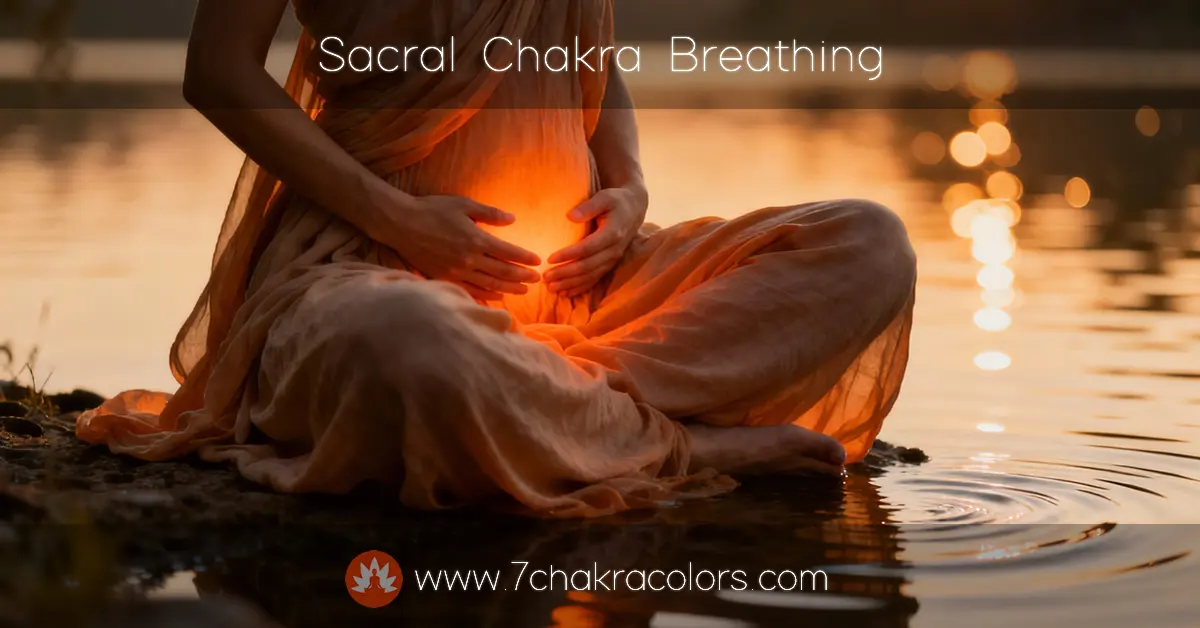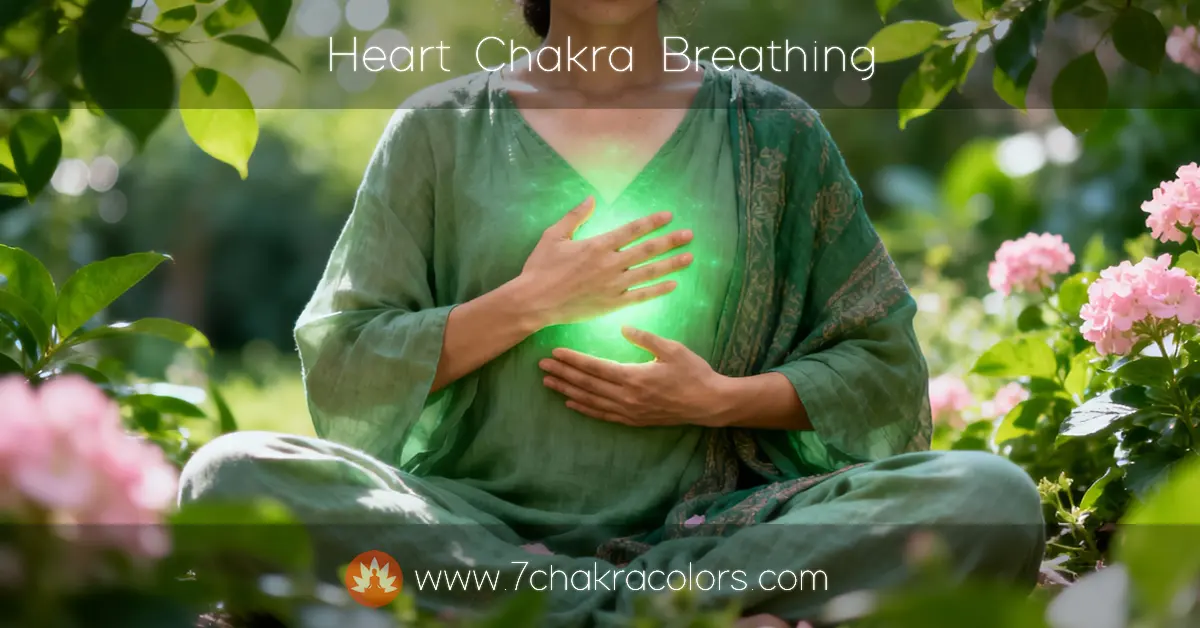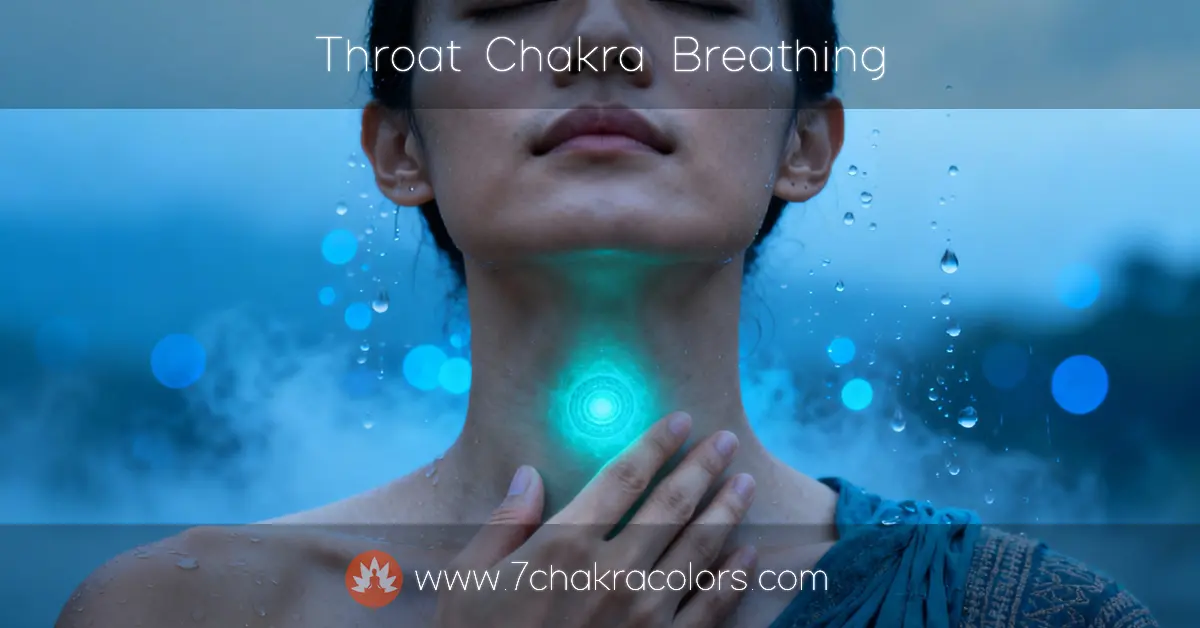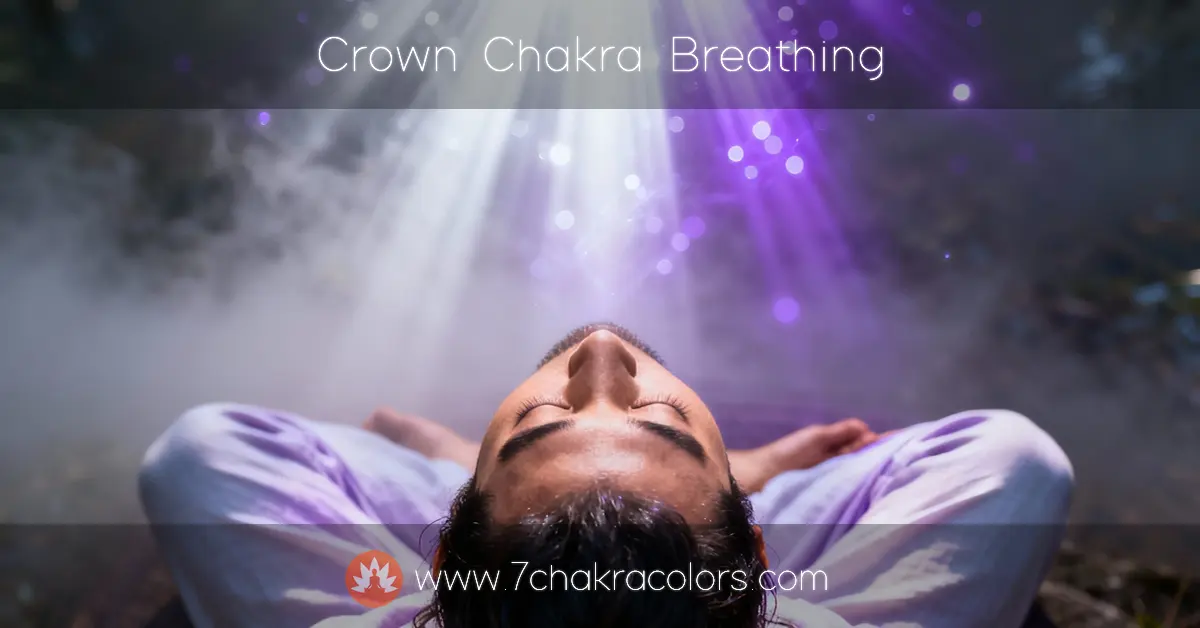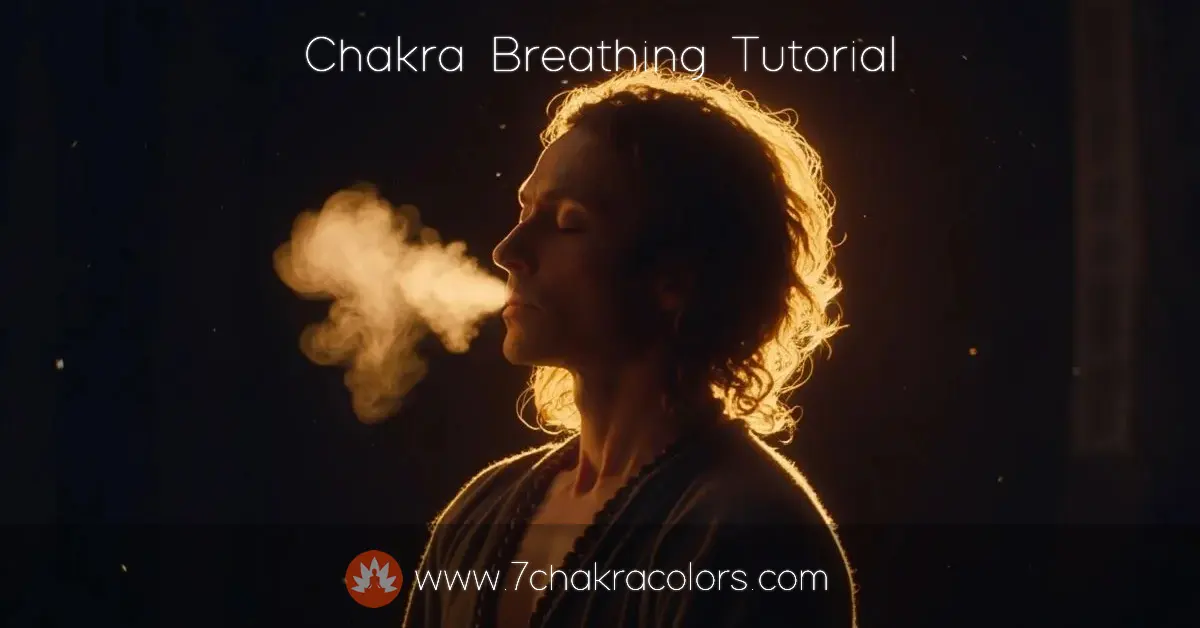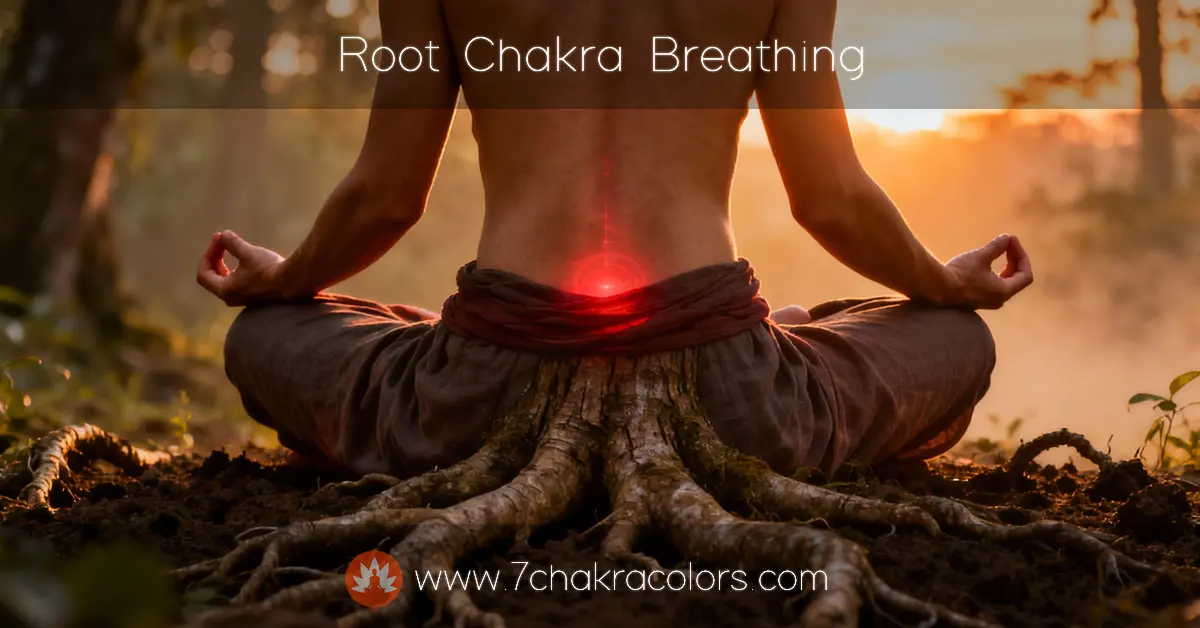
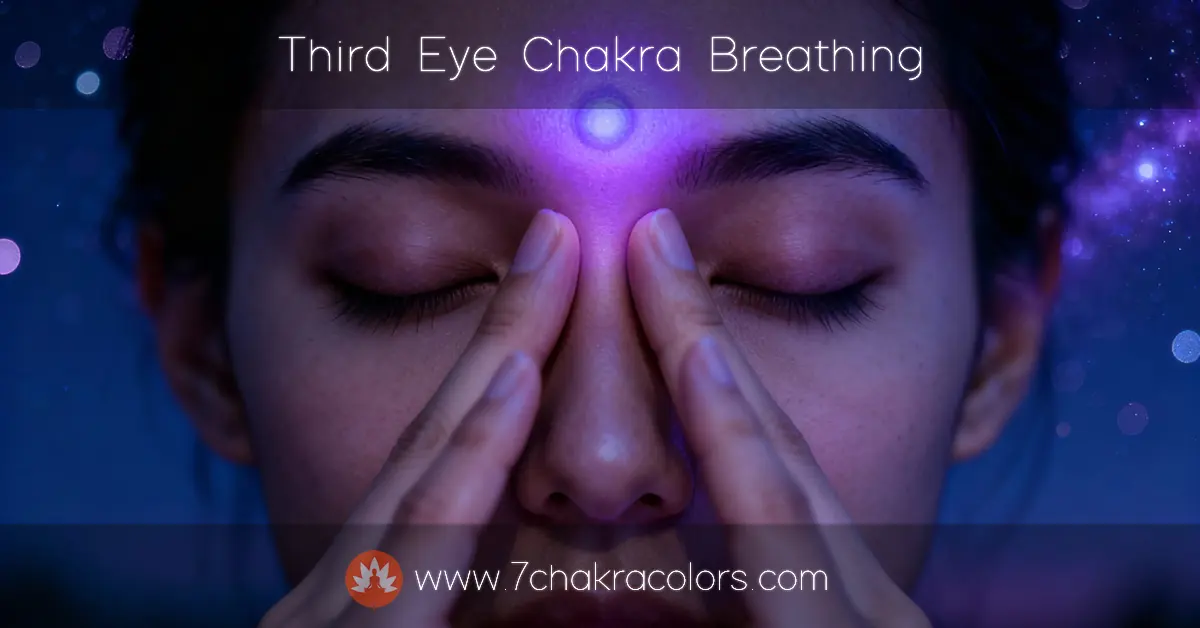
Discover third eye chakra breathing techniques to awaken your intuition fast. Learn 9 powerful exercises from alternate nostril to OM mantra for mental clarity and inner vision.
Your third eye sits in the center of your forehead. Between your eyebrows, extending inward to the pineal gland deep in your brain. When it's blocked, you can't see clearly - not physically, but intuitively. Can't trust your gut. Second-guess every decision. Live in constant mental fog.
Third eye chakra breathing clears that fog fast. These techniques activate your intuition, sharpen your inner vision, connect you with wisdom beyond logic. The confusion lifts. Clarity returns.
Here's what you'll learn:
Before proceeding with this tutorial, also take a look at beginner-friendly chakra breathing exercises here.
The third eye chakra - Ajna in Sanskrit - governs intuition, insight, imagination. Your ability to see beyond the obvious. To know things without knowing how you know them. To perceive patterns, read energy, trust your inner guidance.
Located at your brow point, between your eyebrows. But energetically extending inward to your pineal gland - that pea-sized gland in the center of your brain that produces melatonin and, according to yogic tradition, serves as your seat of consciousness. Associated with indigo energy and the element of light.
When it's open, you trust your intuition. See situations clearly without over-analyzing. Make decisions that feel right even when logic can't fully explain them. Access creativity, imagination, the ability to visualize what doesn't exist yet.
When it's blocked? The symptoms show up everywhere.
Over-intellectualizing everything - trapped in analysis paralysis. Can't make decisions because you're drowning in information with no sense of what's actually right. Ignoring gut feelings that later prove accurate. Living entirely in your head, disconnected from your body's wisdom. Either no imagination at all or getting lost in fantasy, unable to ground vision in reality.
Your body shows third eye blockage problems. Headaches between your eyebrows or deep in your forehead. Eye problems - vision issues, eye strain, even though your prescription is fine. Sleep problems - insomnia or vivid, disturbing dreams. Sinus issues that won't clear.
That foggy-headed feeling that never quite lifts. Like you're always slightly disconnected from reality, operating through a mental haze.
Breath carries prana - life force - directly to your brain. Each conscious breath sends oxygenated blood to your pineal gland, activating it. Certain breathing patterns alter your brainwave state, shifting you from beta (thinking) to alpha and theta (intuitive, meditative states).
When you combine breath with focused attention at your third eye point, you're directing energy exactly where it needs to go. Breathing exercises for third eye chakra work because they create the conditions - mental calm, focused attention, altered consciousness - necessary for intuitive awakening.
Start here. Foundation practice.
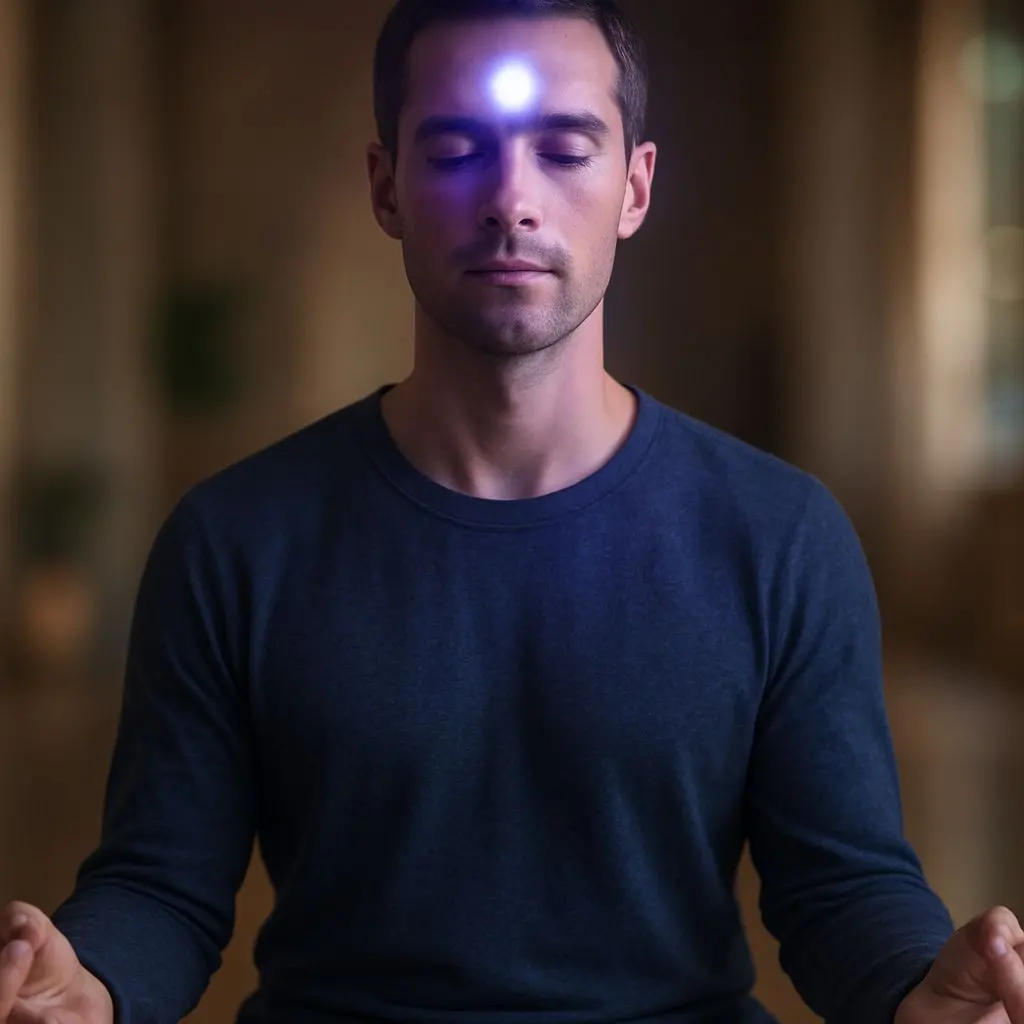
Sometimes clarity comes immediately. That mental fog lifts. You can think clearly again. Decisions that felt impossible suddenly obvious.
Other times it builds gradually. After consistent practice, you notice you trust your gut more. Stop second-guessing every intuitive hit. Can distinguish between fear-based thinking and genuine inner knowing.
This pranayama balances the left and right hemispheres of your brain, which converge at your third eye. When these hemispheres work together harmoniously, intuition flows naturally.
This technique creates mental clarity by balancing your brain's analytical and intuitive functions. Most people feel noticeably clearer after just a few minutes.
This advanced technique uses breath retention to activate your pineal gland directly. Powerful but requires build-up.
Warning: Don't force this. If you feel dizzy, lightheaded, or uncomfortable, stop immediately. Breath retention isn't for everyone. Skip this if you have high blood pressure or anxiety.
When done correctly, breath retention creates powerful activation in your third eye. Many people report seeing colors, lights, or geometric patterns during practice - signs of pineal activation.
This combines breath with visualization for deep third eye activation.
Indigo is the third eye's color - representing deep wisdom, intuition, inner vision. Visualization creates the energetic pattern. Your third eye responds to the focused attention and color frequency.
This technique creates mental stillness - the foundation for intuitive perception. When your mind quiets, intuition emerges.
Box breathing calms your nervous system, slows your brainwaves, creates the mental quiet where intuition can be heard. Use it when you need to make a decision but your mind won't stop spinning.
Kapalabhati - skull shining breath - clears mental fog fast. Literally increases blood flow to your brain, oxygenating your pineal gland.
Skull shining breath clears mental fog immediately. That clouded, confused feeling lifts. Your mind feels sharp, clear, capable of perceiving subtleties it couldn't access before.
This technique creates continuous breath flow with no pauses - developing sustained third eye activation.
Circular breathing creates altered states of consciousness. Many people report profound intuitive insights, visual experiences, or deep meditative states during this practice. Start with shorter sessions and build gradually.
This creates internal vibration that resonates in your head, activating your third eye through sound.
Bee breath creates immediate internal focus. External distractions fade. Your awareness naturally draws inward to your third eye center, where the vibration is strongest.
OM (or AUM) is the universal sound. Its vibration resonates at the third eye's frequency, activating Ajna directly through sound.
OM chanting creates powerful third eye activation. The vibration literally stimulates your pineal gland. Most people feel immediate effects - tingling at the brow, pressure in the forehead, sudden clarity or insight.
Each technique serves different purposes. Here's how they compare:
| Technique | Best Used For | Difficulty Level | Time Needed |
|---|---|---|---|
| Basic Third Eye Breathing | Daily practice, beginners, building foundation | Beginner | 10-15 minutes |
| Alternate Nostril Breathing | Balancing brain hemispheres, mental clarity, daily practice | Beginner | 10-15 minutes |
| Breath Retention | Advanced activation, pineal stimulation, experienced practitioners | Advanced | 5-10 minutes |
| Indigo Light Breathing | Visualization practice, deep third eye work, meditation | Beginner | 15-20 minutes |
| 4-4-4-4 Box Breathing | Mental stillness, decision-making, calming overthinking | Beginner | 10-15 minutes |
| Skull Shining Breath | Quick mental clarity, clearing fog, energizing | Intermediate | 5-10 minutes |
| Circular Breathing | Altered states, deep practice, profound insights | Advanced | 10-20 minutes |
| Bee Breath | Internal focus, meditation preparation, quieting external noise | Intermediate | 5-10 minutes |
| OM Mantra | Direct activation, sound healing, traditional practice | Beginner | 10-15 minutes |
Early morning works best - before your analytical mind fully engages with the day. That liminal space between sleep and waking when intuition is most accessible.
But these techniques are useful anytime you need clarity. Before important decisions. When you're confused about a situation and logic isn't helping. When you need creative insight. Before meditation to deepen your practice.
Ten minutes of alternate nostril breathing or box breathing before decision-making changes everything. Your mind clears. The answer that was hidden becomes obvious.
Third eye chakra breathing becomes more powerful when paired with complementary work. Follow breathwork with third eye meditation to deepen activation. Use indigo or purple crystals like amethyst or lapis lazuli during practice.
Candle gazing (trataka) after breathwork enhances focus. Journaling captures intuitive insights that arise during practice. Yoga poses that bring blood flow to your head - like child's pose, downward dog, or supported inversions - complement breathwork perfectly.
Among other symptoms of third eye chakra opening, you'll notice shifts in how you perceive and decide.
Intuition becomes stronger, clearer. Those gut feelings that you used to ignore or second-guess - you start trusting them. Acting on them. Discovering they're accurate.
Mental fog lifts. You think more clearly without overthinking. Can see situations from multiple perspectives simultaneously. Make decisions faster because you're not drowning in analysis.
Creativity flows. Ideas come easily. You can visualize things that don't exist yet. Imagination becomes accessible again, like it was when you were a kid.
Synchronicities increase. You think of someone and they call. Need information and it appears. The universe seems to respond to your thoughts and intentions more directly.
That chronic tension between your eyebrows releases. Headaches decrease. Sleep improves - both falling asleep and dream quality.
Many people report visual phenomena during or after practice - seeing colors with eyes closed, light patterns, geometric shapes. These are signs of pineal activation, not hallucinations.
Your eyes feel different. More relaxed. Vision sometimes becomes clearer, though this isn't a medical treatment for eye problems.
Forcing experiences. Third eye opening is gradual, not dramatic. If you're trying to have visions or supernatural experiences, you're missing the point. Start with simple clarity and trust.
Practicing only advanced techniques without building foundation. Breath retention and circular breathing are powerful but can be destabilizing without proper preparation. Master the basics first.
Expecting immediate psychic abilities. Third eye activation is about enhanced intuition, not suddenly reading minds or seeing the future. It's subtle, practical, grounded.
Neglecting your lower chakras. Your third eye won't open sustainably if your root, sacral, and solar plexus are blocked. Energy moves upward from a stable foundation.
Start with basic third eye breathing. Ten minutes every morning for one week. Just building awareness of your brow center, learning to direct attention there.
Week two, add alternate nostril breathing. Practice it morning and evening. Notice how mental clarity improves.
Week three, incorporate one sound technique - bee breath or OM chanting. Feel the vibration activating your third eye.
Week four, experiment with indigo light visualization or box breathing. Notice which techniques resonate most strongly for you.
Track subtle changes. "Trusted my gut on that decision" or "Saw the solution without analyzing" or "Knew something before being told." Small shifts compound into genuine intuitive development.
Everything requiring insight, intuition, or clarity flows through your third eye chakra. When it's blocked, you're operating blind - drowning in information but lacking wisdom. Unable to see what's actually happening beneath surface appearances.
These breathing techniques reconnect you with your inner vision. Not through years of mystical training or esoteric practices. Through fifteen minutes of conscious breathing. Directed to your third eye. With focused intention.
Your third eye wants to open. Your intuition wants to be trusted. The fog, the confusion, the endless analysis - those are protective responses that served you once but probably don't anymore. Breath dissolves them gently, creating space for genuine knowing.
Try basic third eye breathing tomorrow morning. Eyes closed, awareness at your brow, breathing indigo light into your third eye center. Ten minutes. Notice what clears.
Breathing opens the third eye chakra by delivering oxygenated blood to your pineal gland and altering your brainwave state. Conscious breathwork combined with focused attention at your brow center directs energy exactly where it needs to go. Specific patterns like alternate nostril breathing balance brain hemispheres, while breath retention activates your pineal gland directly, creating the mental clarity and stillness where intuition naturally emerges.
Some people experience immediate mental clarity after just ten minutes - that fog lifts, thinking sharpens. For deeper intuitive development, consistent daily practice over weeks or months creates lasting changes. Third eye opening is gradual, not dramatic. You're building a relationship with your intuition, which requires patience and regular practice rather than expecting sudden supernatural abilities.
Yes. Techniques like box breathing and skull shining breath quiet mental chatter and clear decision-making fog. Third eye breathing shifts you from excessive analytical thinking to balanced perception where logic and intuition work together. Regular practice helps you make decisions faster without drowning in information, trusting your inner knowing instead of endlessly analyzing every angle.
Early morning works best, especially that liminal space between sleep and waking when your analytical mind hasn't fully engaged yet and intuition is most accessible. But these techniques are powerful anytime you need clarity - before important decisions, when confused about a situation, before meditation, or whenever you need creative insight. Ten minutes of focused breathwork immediately before decision-making can provide the clarity you need.
Third eye opening is about enhanced intuition, not sudden supernatural powers. You'll develop stronger gut feelings, better instincts, increased ability to read situations and people accurately, and clearer decision-making. Some people experience increased synchronicities or subtle precognitive feelings. But expecting dramatic psychic abilities misses the point - the real value is practical, grounded intuition that improves your daily life.
Indigo is the third eye's color, so visualization amplifies breathwork effects. But if visualization doesn't come naturally, just maintaining focused attention at your brow center works fine. Some people prefer feeling sensations - pressure, tingling, warmth - rather than seeing colors. Use whatever method helps you connect with your third eye. The focused attention matters more than the specific visualization technique.
Yes. Third eye breathing rebuilds the connection between your conscious mind and intuitive knowing. When your third eye is blocked, you either don't receive intuitive signals or immediately dismiss them. Regular breathwork strengthens those signals and your ability to recognize them. Over time, you learn to distinguish between fear-based thinking and genuine inner guidance, making it easier to trust your gut.
You'll feel physical sensations - pressure or tingling between your eyebrows, warmth in your forehead, sometimes seeing colors or light patterns with eyes closed. Mental fog clears. Thinking becomes sharper without overthinking. After consistent practice, you notice stronger intuition, faster decision-making, increased creativity, and more frequent synchronicities. The changes are usually gradual and practical rather than dramatic.
Absolutely. Third eye breathing pairs powerfully with meditation, visualization, candle gazing, journaling, and yoga inversions. Use indigo crystals like amethyst or lapis lazuli during breathwork to amplify effects. Follow breathwork with meditation to deepen activation. Journal immediately after practice to capture intuitive insights. These complementary practices create faster and more lasting intuitive development.
Mild pressure between your eyebrows is normal and often indicates activation. But headaches mean you're forcing or practicing too intensely. Back off advanced techniques like breath retention. Start with gentler practices like basic third eye breathing or alternate nostril breathing. Build gradually. If headaches persist, it might indicate energy blockages in lower chakras that need addressing first before working on your third eye.

